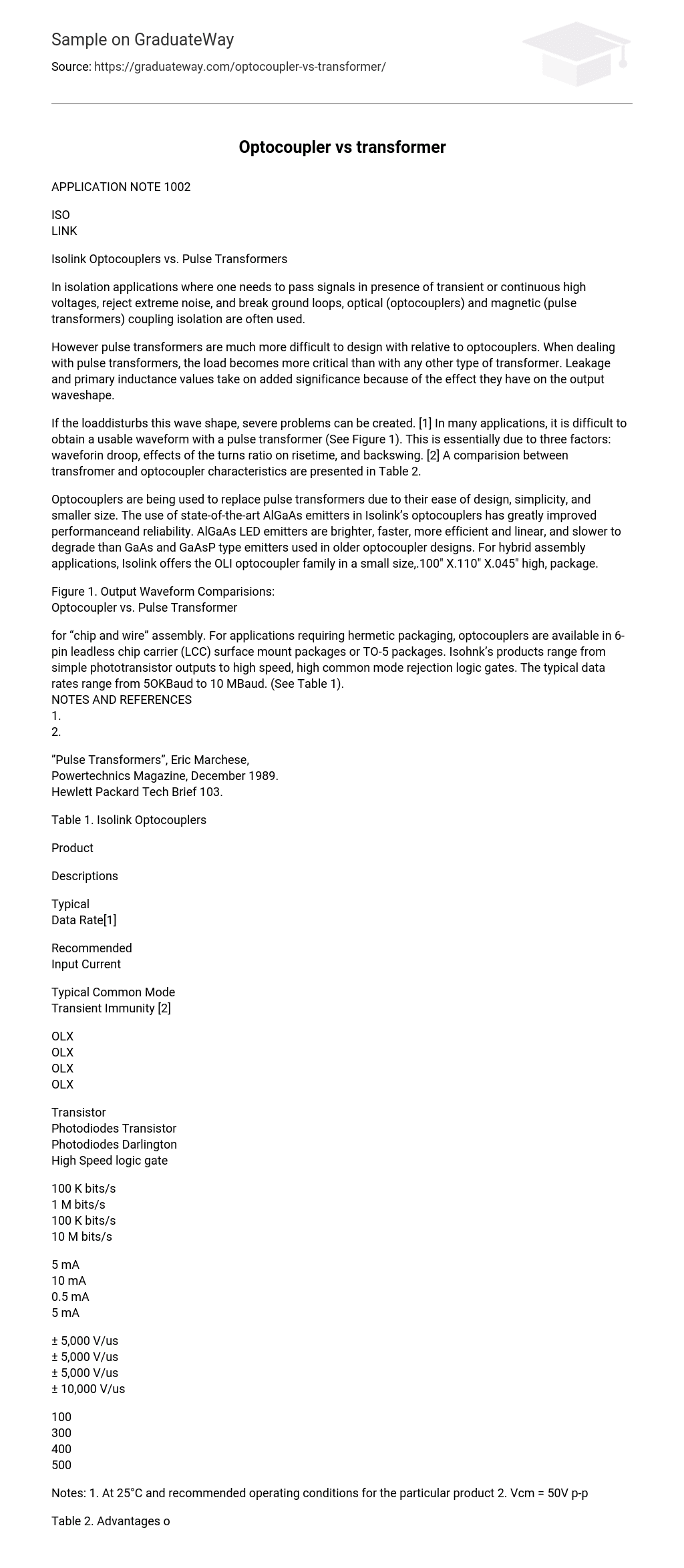In isolation applications, such as situations where one needs to transmit signals despite the presence of high voltages, reject excessive noise, and eliminate ground loops, optocouplers and pulse transformers are commonly employed. Optocouplers use optical coupling while pulse transformers use magnetic coupling. However, designing pulse transformers is considerably more challenging compared to optocouplers. The load in pulse transformers becomes particularly important compared to other transformer types. The leakage and primary inductance values play a significant role in shaping the output waveform.
The disturbance of the wave shape due to load can lead to significant issues. Obtaining a usable waveform with a pulse transformer in numerous applications is challenging (Refer to Figure 1). This difficulty stems from three main factors: waveform droop, the impact of turns ratio on risetime, and backswing.
Optocouplers are being utilized as a replacement for pulse transformers because they are easier to design, simpler, and smaller in size. The performance and reliability of Isolink’s optocouplers have been greatly enhanced by incorporating state-of-the-art AlGaAs emitters. Compared to older optocoupler designs that employ GaAs and GaAsP emitters, AlGaAs LED emitters are brighter, faster, more efficient and linear, as well as slower to degrade. In the case of hybrid assembly applications, Isolink offers the OLI optocoupler family in a compact package measuring .100″ X .110″ X .045″ high.
Waveform droop is directly proportional to the pulse width. For instance, in a specific transformer, the droop is 10% at 1 us and becomes 20% at 2 us. The droop should not exceed the predetermined threshold or a fraction of the original amplitude. This limitation affects duty cycle and speed. Enhancing magnetic flux coupling can enhance droop characteristics but typically leads to increased primary to secondary capacitance. Consequently, this reduces common mode transient immunity and dielectric withstand voltage.





